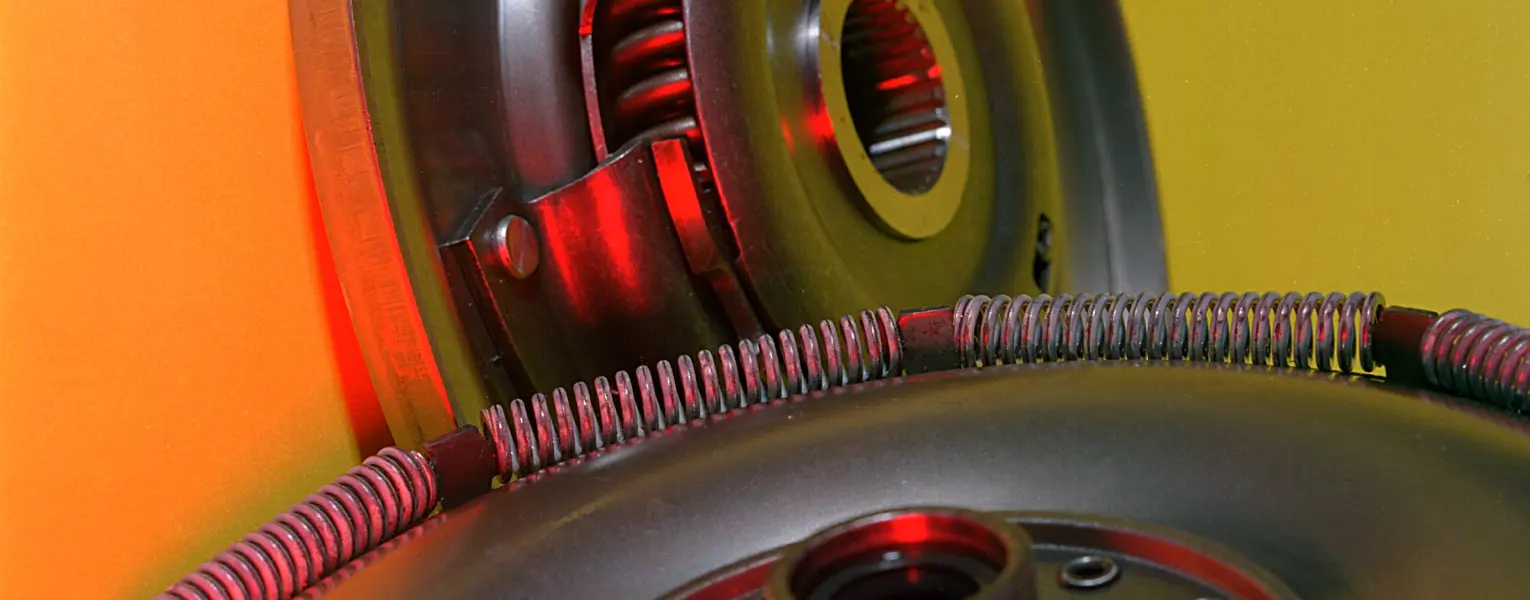Natural frequencies created by the distribution of train component flexibilities and inertias cause damage when torsional critical speeds coincide with strong excitation frequencies. Process trains driven by synchronous motors or with some types of variable speed couplings can be especially sensitive to damage at resonance because of excessive excitation.
Symptoms might not be obvious from normal vibration measurements, but damage can occur by fretting wear at gear teeth and couplings or by high-cycle fatigue of the shafting.
Torsional Measurements
Southwest Research Institute (SwRI) uses torsional measurements to identify torsional vibration problems and damaging critical speeds in rotor trains. If torsional motion problems are suspected, SwRI engineers can identify:
- Speeds with maximum vibration
- Frequency of vibration
- Dynamic stresses and torques
- Load vibration
- Backlash
- Torsional mode shapes
- Effects of operating conditions
With proper signal conditioning, the torsional vibration effect can sometimes be detected by case-mounted accelerometers or by sensing the pinion motion in a gear box. Reliable diagnoses, however, require direct shaft measurement. SwRI offers special instrumentation techniques to measure instantaneous velocity or transmitted torque in a rotating shaft.
Torsional dynamic simulations provide enhanced diagnosis reliability and a means for evaluating design changes to resolve problems.
Critical Speed Map
Critical speed maps, such as the one shown below, help SwRI engineers evaluate a machinery rotor system. Combined with bearing stiffness curves, the critical speed map shows where critical speeds will likely occur. The map indicates the effectiveness of bearing damping in controlling vibration amplitudes. The critical speed map also reveals the likely effectiveness of the changing stiffness of bearings or bearing supports in changing a critical speed.
Effects of Torsional Critical Speed
Torsional critical speeds are commonly found below operating speed in long rotor trains, particularly those with gearboxes. If the critical speed is within the operating speed range during startup, damage can accumulate quickly. Using telemetry, SwRI engineers gather reliable data about the severity of the torsional critical speed from shaft strain instrumentation installed on the couplings. These data are used to evaluate both steady and oscillatory torque. SwRI further evaluates torsional vibration using instrumentation and techniques such as:
- Torsiograph: a packaged torsional velocity transducer for shaft end mount
- Torsional Accelerometer: a piezoelastic or piezoresistive sensor for shaft end mount
- Watt Transducer: an instantaneous reactive power measurement tool for motors or generators
- Casing Acceleration: a tool to relate transmitted reactions at driving or driven components
- Shaft Encoder: a pulse signal demodulation technique for measuring instantaneous velocity at shaft ends or couplings
- Gear Tooth Pulse Sensor: a technique to measure instantaneous gear velocity by demodulation of gear tooth pulse signals
- Pinion Motion: a technique to relate torsional to lateral interaction at the gearbox
All instruments have drawbacks that limit their precision or practicality for some applications. SwRI provides a combination of sensors to improve the reliability of a diagnosis.
Variable-Speed Clutch Instability
Friction drive clutches can develop stick slip instability at partial speed that creates excessive torsional responses leading to clutch and coupling damage. SwRI uses torque telemetry instrumentation to correct problems and to provide precise, robust signals for a high reliability diagnosis.
Contact us for more information about machinery torsional dynamics or rotating machinery technologies at SwRI. To contract with SwRI, please contact the Machinery Services Hotline at +1 210 522 3000.
For more information, contact Jeff Moore or call +1 210 522 5812.

